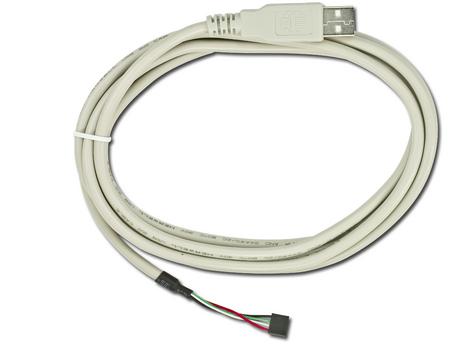As part of a push to get some exposure for our cool LCD displays, I was tasked with connecting one to a Raspberry Pi. I thought this would be pretty quick.
I was however surprised at HOW quick it was. Apparently everything I wanted to do was already available and included (for the most part), it was faster and easier than I’d thought it would be.
What you are going to need:
What I like most about this process is the whole thing can be done by SSHing into the Pi, doing the configuration and then enabling it via the Pi’s configuration menu.
First thing I did was SSH into the Pi. I then installed lcdproc using apt-get. lcdproc is an independent software utility that we recommend pretty heavily to any Linux based customers.
I’m using a CFA735 but the process is mostly the same for any of the other Crystalfontz modules that I listed above.
I then did a
to get the device’s hardware address. A CFA735/CFA835 should show up as
but the rest of the displays should show up as
I then edited the config file for LCDd
The first thing to do is change the driver
Then, under [CFontzPacket], there are two settings to change
With ttyACM0 being whatever device address you got from above. I’m choosing the 635 even though I’m using a 735 because the 735 and the 835 are both close enough in the command set that they don’t need their own configuration options, their command structure is purposely similar to the 635.
Then, restart the LCDd daemon and wait for XBMC to connect to it.
Once the LCD shows the lcdproc is in control, jump over to the Pi and find the lcdproc add-on
Settings -> Add-ons -> Search -> lcdproc
The Add-on is called Services – XBMC LCDproc. Click that and click install. Once installed, reboot then pi with everything connected and it should pick it up once it’s booted.
You shouldn't have to do anything else. It does take a minute for XMBC to connect but once it does, the LCD should show Clients: 1 (if it’s the only one) and then you are good to go.


See? Easier than you expected? It certainly was for me. The reason it’s so easy is because of the hardworking people at lcdproc and Daniel Scheller.
Without these fine people, this would have taken WAY too long.
I was however surprised at HOW quick it was. Apparently everything I wanted to do was already available and included (for the most part), it was faster and easier than I’d thought it would be.
What you are going to need:
- A Raspberry Pi running XBMC (I used Raspbmc)
- One of the Crystalfontz USB Display Modules (CFA631, CFA632, CFA633, CFA634, CFA635, CFA735, CFA835)
- XBMC LCDproc Python addon
- A surprising little amount of time
What I like most about this process is the whole thing can be done by SSHing into the Pi, doing the configuration and then enabling it via the Pi’s configuration menu.
First thing I did was SSH into the Pi. I then installed lcdproc using apt-get. lcdproc is an independent software utility that we recommend pretty heavily to any Linux based customers.
Code:
sudo apt-get install lcdprocI’m using a CFA735 but the process is mostly the same for any of the other Crystalfontz modules that I listed above.
I then did a
Code:
ls -la /dev/tty*
Code:
/dev/ttyACM*
Code:
/dev/ttyUSB*I then edited the config file for LCDd
Code:
sudo pico /etc/LCDd.confThe first thing to do is change the driver
Code:
Driver=CFontzPacketThen, under [CFontzPacket], there are two settings to change
Code:
Model=635
Device=ttyACM0Then, restart the LCDd daemon and wait for XBMC to connect to it.
Code:
sudo service LCDd restartOnce the LCD shows the lcdproc is in control, jump over to the Pi and find the lcdproc add-on
Settings -> Add-ons -> Search -> lcdproc
The Add-on is called Services – XBMC LCDproc. Click that and click install. Once installed, reboot then pi with everything connected and it should pick it up once it’s booted.
Code:
sudo shutdown -r nowYou shouldn't have to do anything else. It does take a minute for XMBC to connect but once it does, the LCD should show Clients: 1 (if it’s the only one) and then you are good to go.


See? Easier than you expected? It certainly was for me. The reason it’s so easy is because of the hardworking people at lcdproc and Daniel Scheller.
Without these fine people, this would have taken WAY too long.
Looking for additional LCD resources? Check out our LCD blog for the latest developments in LCD technology.

